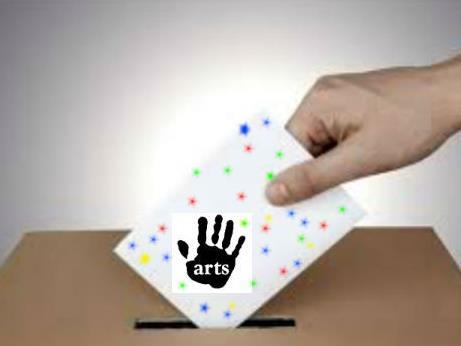Image: ArtsHub
Five small towns across Victoria have just shown the world what the power of creative collaboration can achieve – and it’s transformative. Artists taking the lead in imagining a shared future by harnessing and then building on a creative vision. The extraordinary generosity of property owners gifting private land in perpetuity to create new public spaces. Those sites then reinterpreted as places for new thinking, new gatherings and new artworks. Small Town Transformations has helped get the whole state talking about the arts – and as the election draws nearer, that’s only going to intensify.
The Victorian state election on 29 November 2014 is the first in living memory to be fought on cultural grounds. There is great interest in each party’s vision for a confident future, as indeed there is great interest in any party able to express a positive vision these days. Not only has each major party released a statement on the arts, but some offer visions that are substantially new.
The Liberal-National Coalition government has led major industry change during its brief time in office. The Organisations Investment Program, VicArts and Expert Arts have reshaped the way government partners with arts organisations, allowing for longer-term approaches that can promote a sustainable industry. In the absence of an arts policy, these programs have recognised the pivotal role played by Victoria’s diverse array of emerging and established independent arts organisations. Once indexation is restored to these government investments, such organisations can move beyond regressive budgeting and begin to take the creative risks that are rightly expected of them.
Victorian Labor proposes a radical rethink of the government’s arts agenda and its delivery agency, establishing a new body called Creative Victoria to take a comprehensive view across all creative industries. While it’s unclear what this might mean, reframing arts policy across multiple portfolio areas recognises the power of that investment to drive innovation, foster health and resilience, and develop thriving places. More detail beyond the name of the new body is keenly anticipated.
As with each election period, the Arts Industry Council of Victoria has solicited arts statements from all key parties, and these are on the website at www.aicv.org.au. The statements are illuminating, confirming the strategic importance of the arts to any policy platform that can present itself as a comprehensive proposal for governing Victoria.
What’s needed now is to build that comprehensive vision. Beyond structural approaches to independent and government organisations and how they are funded, we need a vision for the arts that is a vision for this state of the arts. Arts for urban and regional development. Strategies that address the places where art is made, shared and discussed. Creative strategies that span practitioners, communities of practice, audiences, leaders and facilitators, venues and public spaces. Understanding Victoria as a set of interconnecting regions: a complex of inner and outer, urban and suburban, each with their own needs. How do you inspire art across a whole state? By understanding its regions – urban and rural – and what makes them unique.
Reclaiming the state of the arts must fast become a priority for the next government: there is no time to be lost in recovering Victoria’s leading edge. Among talk of trams, trains and road tunnels, let’s not lose sight of where we need them all to lead: to a confident future. The Wheeler Centre’s recent day-long Citizens Forum of self-selecting activists, apathists and everyone in between concluded resoundingly that constructive, comprehensive visions are needed – and fast.
So here’s your challenge from today to election day. Every time you see or hear a campaign message or promise, put it through your cultural filter. What does this mean for the places that make up your world? For your capacity to express yourself, to create your own culture rather than consuming it ready-made? How do you quantify, how do you articulate, how do you imagine the impact of art?
Ask anyone from Ouyen, Dookie, Avoca, Natimuk or Neerim South.





